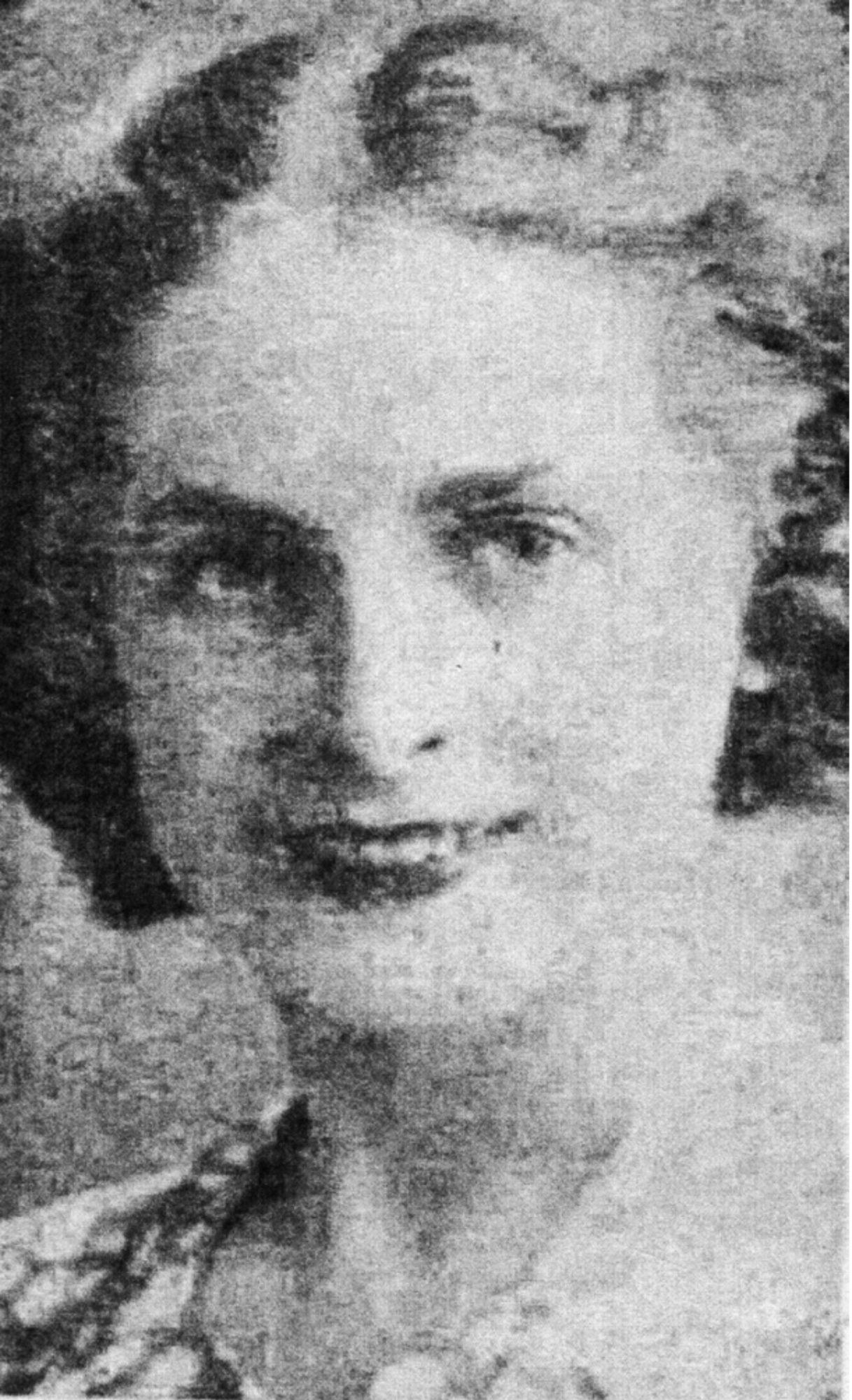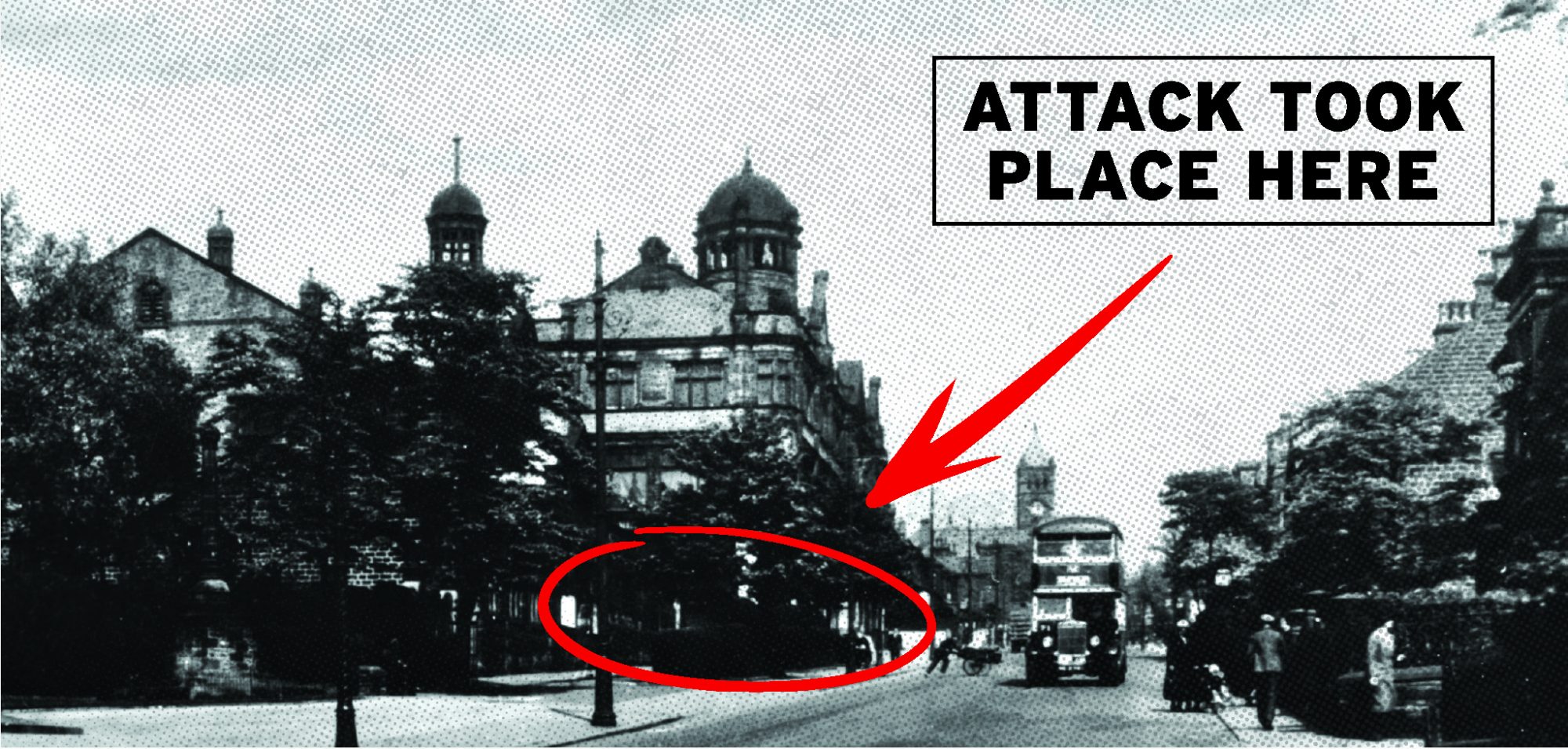
THE COLNE STRANGLER
by Neil. R. Storey
IN MARCH 1941, A NUMBER OF LONE WOMEN ON PUBLIC ROADS IN THE COLNE AREA WERE ATTACKED BY AN UNIDENTIFIED MALE ASSAILANT DURING THE BLACKOUTS...
The hallmark of the attacker was that he suddenly grabbed them by the throat. Most of the women he assaulted did not immediately report the matter to the police or, if they did, were not taken seriously. Reports were not published in newspapers, women were not put on their guard and the violence used in the attacks escalated.
Eileen Barrett (19) was the only daughter of volunteer ambulanceman Allan Barrett, manager of the Ceresco poultry food business in Swan Croft, Colne, and housewife mum Ida, Eileen was the older sister of Colin, a schoolboy at Clitheroe Grammar School. They all lived together in Back Side Farm Cottage with Ida’s mum, dear old Granny Caffrey, round the corner at Proctor Croft.

Eileen Barratt
Eileen had worked hard at school and progressed to Colne Grammar School and Alston’s College in Burnley. After she left college, she worked as a cashier-secretary at the Royal Insurance Company on Grimshaw Street. She loved sports and outdoor activities; she played for a girl’s hockey team, was an officer in the Girl Guide troop attached to St Mary’s, and a group fire watcher in the village. Intending to volunteer to do something more for the war effort, under the National Service scheme, she had recently resigned as secretary of the parochial church council. She was the sort of daughter any parents could be proud of. She had boyfriends, but nothing too serious, and her life revolved around the church. Eileen may appear to our modern eyes to have been living rather a staid life but values were different then and, for many, the life she was living was one to aspire to, and worthy of respect in working-class communities in the 1940s. Eileen was a tall and attractive young woman who dressed smartly, but not decadently and was intelligent and charming. Known for her bright outlook on life, she was well-known and well-liked in Trawden.1
At approximately 9.20 pm, when he was about 10ft past the bus stop, he heard a woman’s scream coming from behind him.
Eileen did not go out at night very often unless it was to attend the groups or social activities connected with the church or Civil Defence work. However, with wartime shortages becoming more acute by the month, she wanted to learn how to make her own clothes so she had enrolled in evening classes at the Technical School in Colne. Looking outside at the grotty weather on that March night she told her mother she didn’t feel like going, but she had been working so hard on the party frock she had been making during the course, and it was the last night of term. She was also due to sit an exam the following Saturday, so she decided to go. She picked up her attaché case containing the dress, told her mum she would not be late, and off she went. She left the cottage to catch the bus at 6.40 pm that would get her to Colne in time for the 7.00pm start of her class.
Once she arrived at Colne, her bus stop was on the corner of Linden Road and Albert Road, only about 30 yards from the entrance of the Technical School. Eileen’s class ended at shortly after 9.00 pm and her classmates dispersed into the blackout on that dark, rainy night soon afterwards. Elizabeth Kelsall of Birchenlee Farm, Colne, had been at the class with Eileen. Leaving the classroom shortly after her, she remembered seeing Eileen standing alone at the bus stop. Local man Robert Duerden was walking up Albert Road that night. At approximately 9.20 pm, when he was about 10ft past the bus stop, he heard a woman’s scream coming from behind him. He stood for a second or two then shouted, ‘Are you all right?’ but could not see anybody. He went to where the scream had come from and found Eileen standing under the street lamp near the bus stop.

George Keith, the newly appointed Colne postmaster, had been sheltering in a shop doorway as he waited for his bus when he heard the scream. He also came running over and arrived as Mr Duerden was asking her what was the matter. Clearly shaken by what had happened to her she replied, ‘I have been hit in the back by a man whilst I was waiting for a bus. He got hold of my throat.’ Looking around to see if he could spot her assailant, Mr Keith spotted ‘the fleeting figure’ of a man running away down Linden Road and into the dark wet night. Clearly frightened by the experience and undoubtedly in shock, Eileen said she had felt something pierce her back but did not think she had been seriously injured, just hurt by the blow, so she continued to board her bus along with Mr Duerden and Mr Keith who were also making for the Yorkshire side of town. They travelled with her to the Heifer Lane bus depot. During the journey, she told George Keith she did not know the man who had attacked her. He recalled that Eileen kept moaning while she was on the bus but he attributed this to the pain of the blow she had been delivered. When they arrived at the bus depot there was more light and he could see she was looking very pale. It was only when he put his arm around her to assist her from the bus that he noticed her clothes were saturated with blood and it appeared that she had been stabbed in the back.
Upon examination of her coat, costume jacket and woollen jumper, Stirzaker also found cuts that coincided with the position of the wound in the shoulder.
An ambulance was summoned to the depot and she was rushed to Hartley Hospital. On arrival, she was still conscious. She took some brandy, thanked the men who had assisted her then lost consciousness and died from an internal haemorrhage just minutes later. Detective Sergeant Noel Stirzaker stated at the inquest that he had received information at 10.00 pm that a girl had been stabbed in the back and had been taken to Hartley Hospital. By the time he arrived at 10.20 pm she was already dead. He examined the body and found a wound in her back near her right shoulder blade. Stirzaker then took possession of the girl’s clothing, most of which was stained with blood. Upon examination of her coat, costume jacket and woollen jumper, Stirzaker also found cuts that coincided with the position of the wound in the shoulder.
At 10.30 pm, Eileen’s father was notified by a police officer that his daughter had died, and he was taken to Hartley Hospital where he formally identified her body. DCS Peter Gregson Head of Lancashire Constabulary CID was put in charge of the investigation. Working with DCI John Woodmansey, the pair were soon on the spot where the attack took place. They were later joined by members of the staff of the North Western Forensic Science Laboratory. Police searched for the assailant and the weapon through the night to no avail. The official announcement of Eileen’s murder was made on 25 March. The Chief Constable of Lancashire, Captain Archibald F. Hordern, spoke to reporters at Nelson Police Station about what they had managed to ascertain about Eileen’s murder and revealed that a similar incident had occurred about the same time on Sunday, 23 March, just two days earlier, a few miles away at Reedley. Police were concerned that these crimes were committed by the same man. The difference was that this woman had escaped. To ensure she remained safe Hordern did not name the victim (Teresa Ann Baldwin), only describing her as a domestic servant. Hordern explained that she was walking home along Reedley Drive when she had been grabbed by the throat by a man who threatened to kill her. She had fought hard and after a violent struggle had managed to get away. If they managed to catch Eileen’s killer there was a chance Teresa Baldwin could identify him. While careful to play down the suggestion of a serial attacker, in order to avoid panic, press reports stated that it was possible the attack and murder ‘could be the work of a maniac’.2
- Nelson Leader 28 March 1941
- Nelson Leader 28 March 1941
Read more about the Colne Strangler and other wartime murders in The Blackout Murders by Neil R Storey. Published by Pen & Sword.
Northern Life May/June 23




